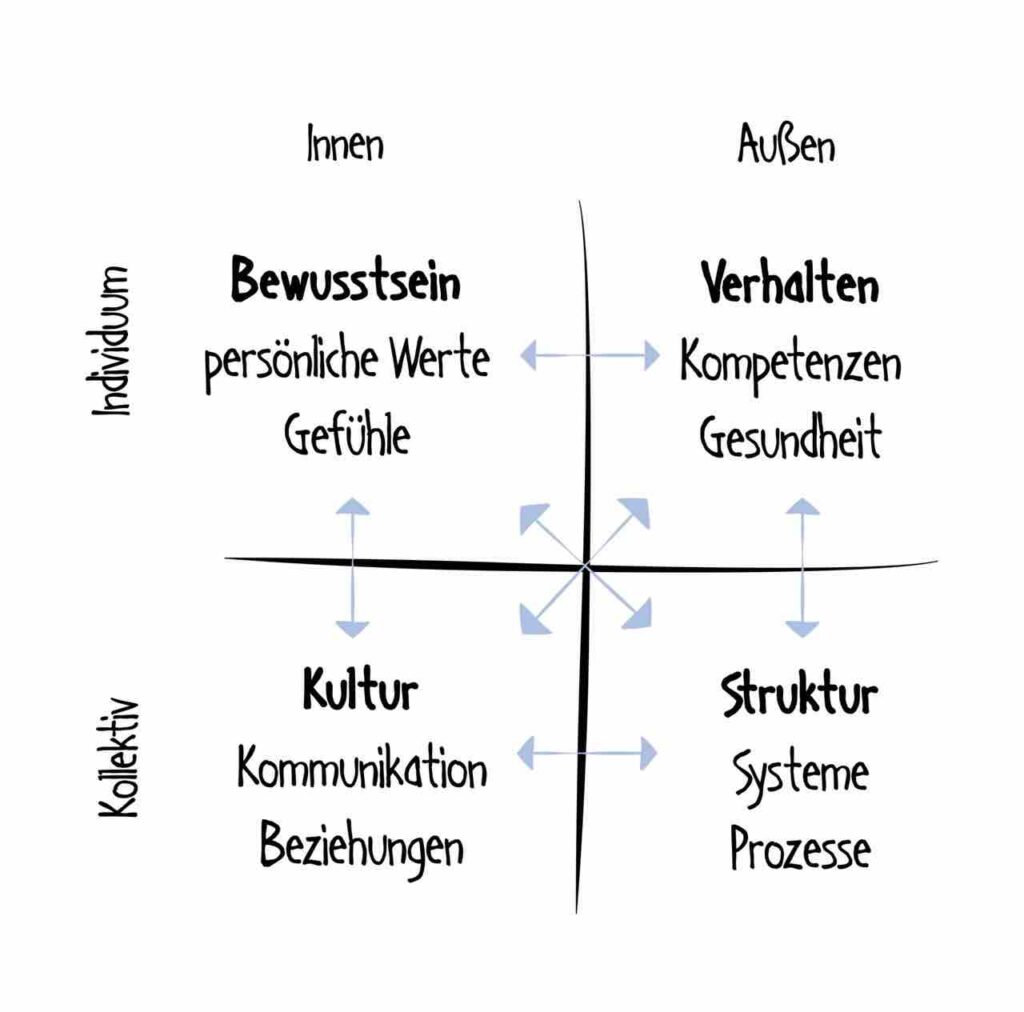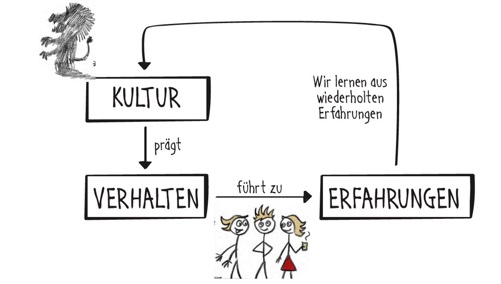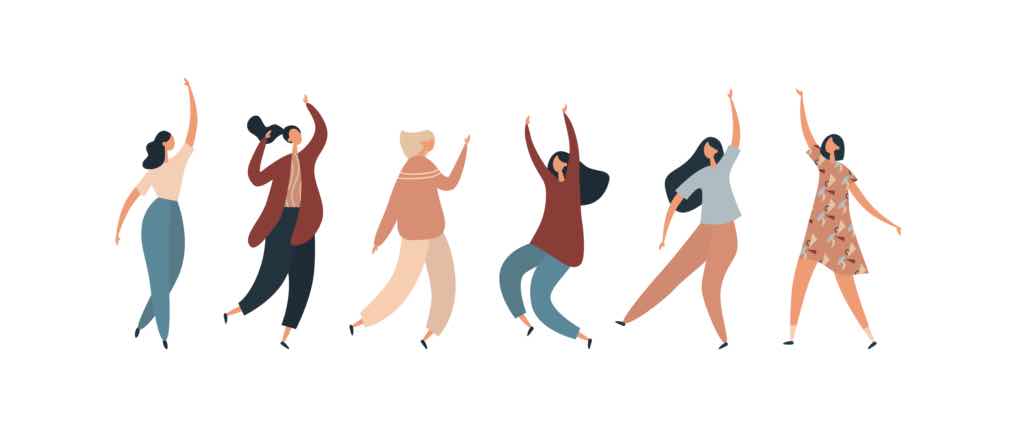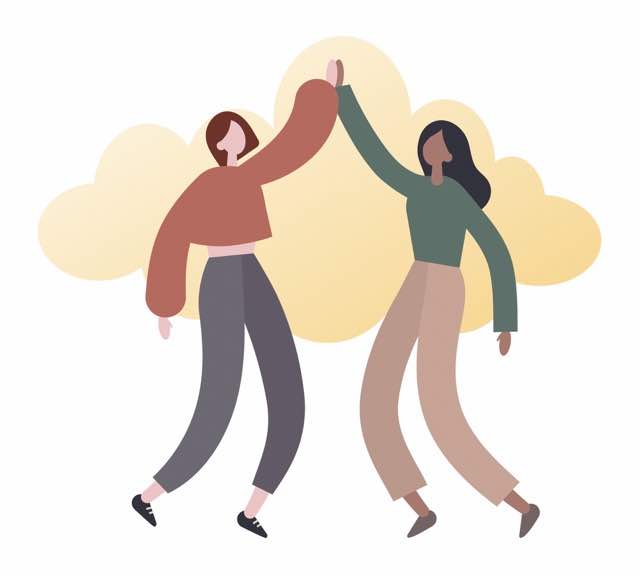Or: what happens when we release external structures?
Change initiatives often describe how external structures and processes should change. However, this is only "half the battle": Successful transformation requires work on internal structures in addition to external changes. This article explains why this is so important and how we can give inner changes more space.
In my role as an agile coach, I work a lot with organizations that are embarking on a journey: towards agile working methods, flatter hierarchies, more shared leadership and self-management. Old structures are being loosened, processes rethought. Decisions are made where they are needed. All with the aim of becoming more responsive and being able to adapt more quickly to the constantly changing environment. In short: to become a resilient organization.
So we are beginning to question structures, rethink processes and give more responsibility to teams and individuals. But what does this do to the teams and individuals in the organization? The structures of the organization have often developed over decades. The primary purpose of the organization may be fulfilled in a different way today. But the structures also had another function: they give us humans security. When organizations strive for flatter hierarchies and more self-management, the visible, "rigid" structures often fall away. And with them the security they convey. In order to compensate for this, we need to build up skills and develop human maturity, which will make employees stronger and more self-confident. When we dissolve external structures, we should also support the people in the organizations in building internal structures. The dissolution of external structures can only succeed if each individual is in good contact with themselves, is aware of their own strengths and weaknesses and can clearly articulate their needs.
Inner and outer stability
We know from psychological studies that the individual feeling of security in life forms the basis on which we make experiences and meet other people. If we feel unstable inside, we need more stability on the outside. In this case, rules and structures are a great help, while change and conflict create stress. If, on the other hand, we feel secure and relaxed inside, we can cope with challenges and stress and react flexibly to change. Then we have confidence in our own skills and those of our colleagues, new paths become conceivable and we are confident that we will achieve good results together. For this reason, it is important that in transformations we give space not only to external structural changes but also to the (internal) competence development of the people in the organizations.
In order to take an integral view towards holistic transformations, I like to use the AQAL model by Ken Wilber(All Quadrants, All Levels). The model describes four perspectives along two axes: inside vs. outside and individual vs. collective. The basic assumption is that transformations are only effective if we include all four quadrants equally. In other words, if we change something on the outside, inner constructs (such as personal awareness or collective beliefs) must also evolve for the change to have a lasting effect. And vice versa: if we continue to develop internally, the external structures may no longer match our goals or our needs.

Many frameworks describe how to succeed in changing the outside. In contrast, there are fewer recommendations for developing the inside. That is why I would like to share a few suggestions below that help me to navigate the tension between external and internal change.
Inner growth
To begin with, the question arises as to what extent we can influence the processes that we subsequently refer to as "culture". At wibas, we are convinced that changes on a cultural level occur when we repeatedly try out new behaviors and have positive experiences with them.

We cannot change "culture" as the sum of all experiences. In any case, we cannot influence it directly. But we can accompany and support the process from behavior to experience and thus indirectly influence the development of inner structures.
For example, by building the necessary skills, we can increase the chance that the changes will be perceived positively. A product owner who wants to learn how to better organize their backlog; a team that wants to learn how to improve their conflict management skills; a manager who wants to learn coaching skills or a team member who wants to develop better self-management - all of this is part of building skills in the bottom left quadrant, the individual skills that have a collective effect.
In addition, we can support the reflection process that gives the new behavior its meaning. Becoming aware of this experience can generate a lot of energy. If the change in behavior does not generate any experiential value, it will not become established.
Sometimes, as an outsider, I notice something positive that is not seen by those involved. Then I draw attention to it, usually with a question for reflection. I like to use workshops and retrospectives for this. Models can help to find words and also make complex topics such as "internal structures" discussable. The book "New Work needs Inner Work" (Breidenbach & Rollow, 2019) has often helped me: In it, the organizational developer Bettina Rollow presents many practical (reflection) questions and helpful models.
It seems to me that this - as is so often the case with change - is about awareness. Awareness that there is more than the external, visible structures. Awareness of what skills we have and where we can still put energy into so that all quadrants - the inner and the outer - come into harmony with each other. Dealing with this is rewarding on many levels. Our personal resilience is strengthened when we recognize which resources we bring with us and which we have learned, and that we can rely on these resources in turbulent times. And this in turn strengthens the resilience of our organization.
Sources:
Breidenbach, Joana & Rollow, Bettina (2019): New Work needs Inner Work. A handbook for companies on the path to self-organization. Berlin: Das Dach Berlin UG.
Kaczmarek & Foegen (2016): Organization in a digital age: wibas GmbH
Walsh, Roger, and Ken Wilber. Integral theory in action: Applied, theoretical, and constructive perspectives on the AQAL model. SUNY Press, 2010.
About the author:
Caroline Reinecke, psychologist, agile coach and trainer at wibas. caroline.reinecke@wibas.com
More articles in this digital magazine:
Agile working and positivity in coaching

Tears of relief and joy at seeing themselves in a positive light and accepting themselves even more for who they are. These were the reactions to our coaching sessions with the Agile Masters. We have married our insights from positive psychology with agile working in coaching. And the reaction of the coachees is confirmation enough that we are on the right track ...
Conjuring up satisfaction - What does it take to make people in organizations feel good?
How are the people at wibas doing in lockdown? I conduct a telephone survey and ask "magic wand questions": What does it take for people in organizations to be happy? The answers lead us on a path to dealing with happiness ...


Comments
Write a comment